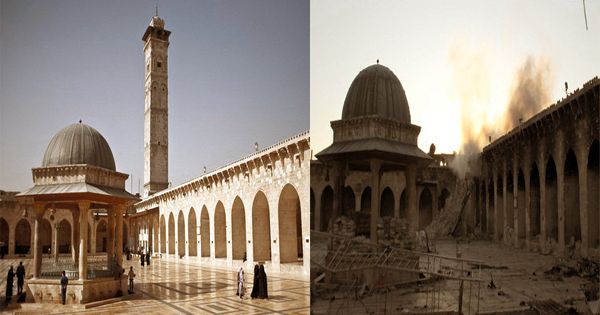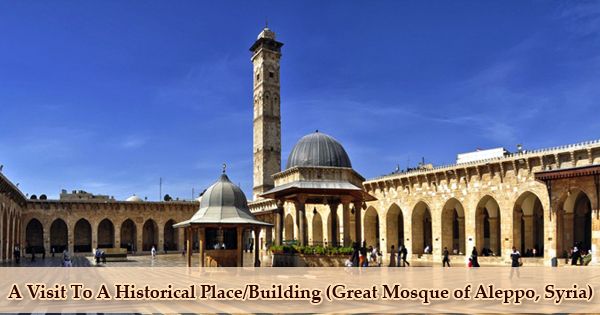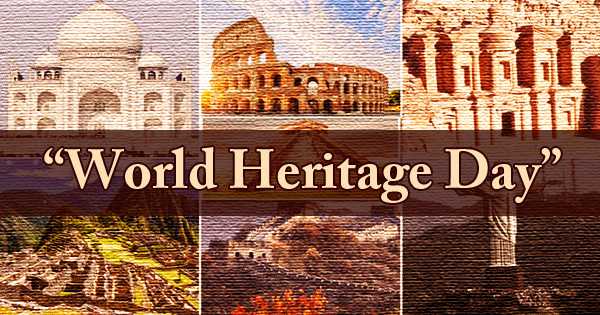During the reign of Umayyad Caliph al-Walid I ibn ‘Abd al-Malik (r. 705-715/86-96 AH) or his successor, Sulayman (r. 715-717/96-99 AH), the Great Mosque of Aleppo (Arabic: جَـامِـع حَـلَـب الْـكَـبِـيْـر, Jāmi‘ Ḥalab al-Kabīr) or the Banu Umayya Mosque of Aleppo (Arabic: جَـامِـع بَـنِي أُمَـيَّـة بِـحَـلَـب, Jāmi‘ Banī Umayyah Bi-Ḥalab) was first built in the heart of the old city of Aleppo, Syria. Originally built by the first imperial Islamic dynasty, the mosque is currently part of the UNESCO World Heritage Site and once again stood as a battlefield during the recent Syrian War, but this time it lost its most powerful and resilient feature, the Seljuk Minaret of the 11th century. It is the largest mosque in the city of Aleppo, Syria, and one of the oldest; it is situated in the district of al-Jalloum in the ancient city of Aleppo, a World Heritage Site, near the entrance to Al-Madina Souq. The building represents the ancient past and layered history of Aleppo itself: today’s mosque does not maintain its original shape, having undergone a number of renovations and reconstructions in its continuous use for over a thousand years. The mosque was built on the site of a former Roman temple and St. Helen’s Byzantine cathedral (mother of Constantine the Great). The mosque is allegedly home to the remains of Zechariah, John the Baptist’s father, both of whom are revered in Islam and Christianity. It was built in the early 8th century CE. The original house, however, dates back to the 11th through 14th centuries. The mosque remains an iconic Islamic landmark, despite all the structural modifications. The mosque was badly damaged during clashes between Free Syrian Army armed groups and Syrian Army forces on 13th October 2012. A presidential decree was issued by President Bashar al-Assad to form a committee to rebuild the mosque by the end of 2013.

Great Mosque of Aleppo, Syria
A courtyard surrounded on at least three sides by an arcade with a long and shallow prayer hall on the Qibla side was the center of the original structure. In the north-west corner of the complex, the minaret is located. The original mosque had a wooden roof and possibly had a dome over the nave preceding the mihrab, a style of mosque architecture known from the Damascus Umayyad Mosque. The completed design of the plan (following the reconstruction of Zangi) was arranged in a rectangular 150 × 100-meter hypostyle pattern. In the center, there is a wide marbled courtyard with pavilions, fountains, porticoes, and gates that provide access to the mosque from all sides (the eastern gate, however, can provide prayers with direct access to the praying hall). The prayer hall, enclosed by stone vaults resting on piers, is 19 bays long and 3 bays wide. The east riwaq is 2 bays wide, while only one bay deep is the western riwaq. The core elements of the mosque are in the main prayer hall: the shrine of Zachariah (father of John the Baptist), a minbar from the fifteenth century, and an elaborately carved mihrab. Maybe its most famous portion was the stone minaret of Aleppo’s Umayyad Mosque. Its lower shaft, decorated with blind arches and separated by inscription bands, was divided into five tiers of varying lengths. The top-level has been surmounted by a cornice of muqarnas. Originally, the prayer hall had a simple straight roof with a central dome, but with an elaborate cross-vaulted structure with arches and a small dome over the arcades, the Mamluks replaced it. Above it rose a smaller tower surrounded by a wooden balcony. An ornamented Maqsurah (enclosed space) which holds the tomb of the remains of Prophet Zakariya sits alongside the Mihrab. A lavish robe, embroidered with silver-colored Quranic verses, drapes the tomb. The Great Mosque has a small museum containing a number of ancient manuscripts attached to it. During the Syrian War in 2013, the museum’s number of precious items, including a package allegedly containing a strand of the Prophet Muhammad’s hair, were subjected to looting. The rebels, however, claimed that they had instead rescued and hidden ancient handwritten Koranic texts. There was also substantial damage to the courtyard, and the enclosed prayer hall.
















